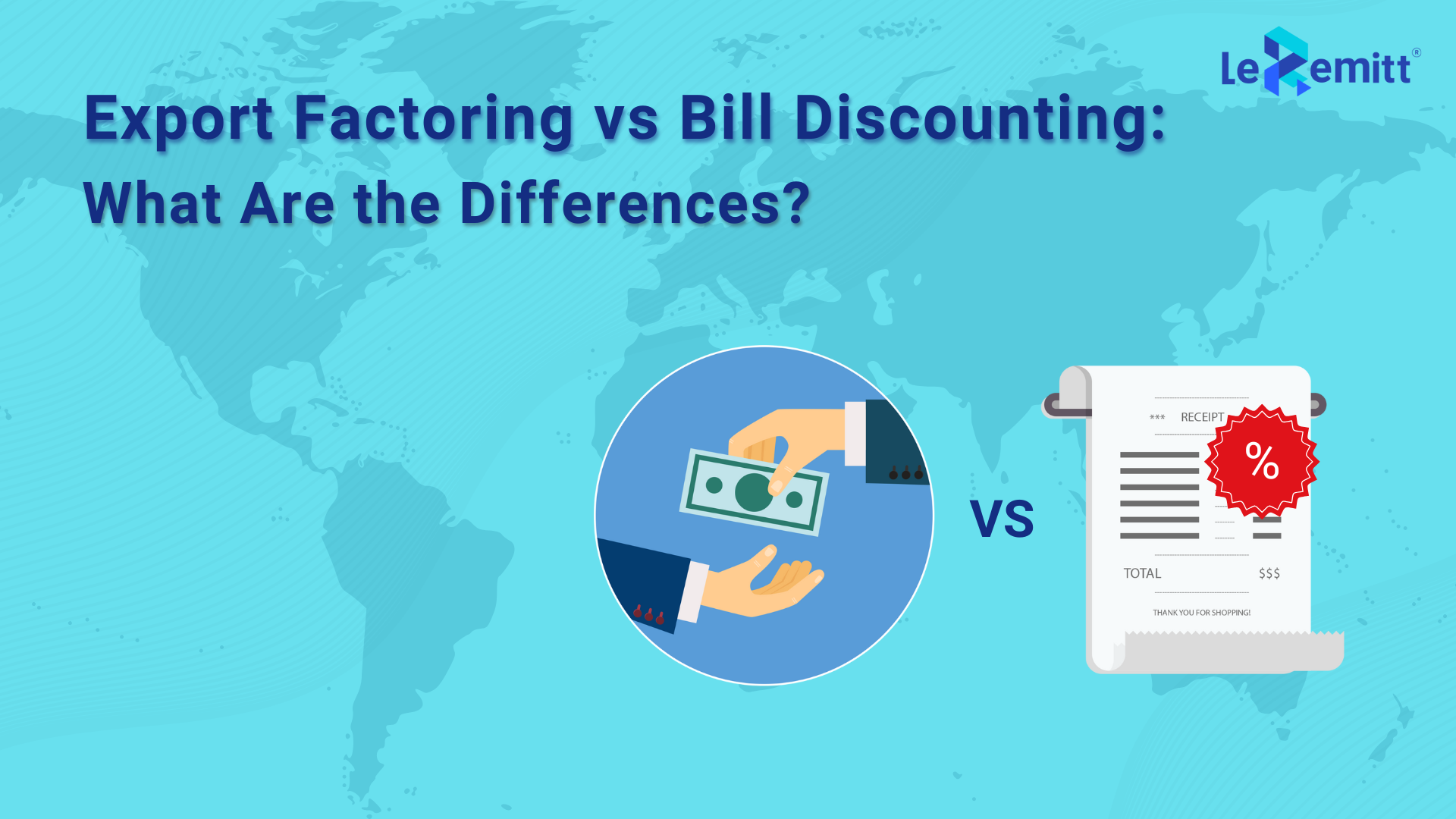What Is the Difference Between Factoring and Bill Discounting?
As an exporter, you must keep your operations and finances in good shape. While the business can be thrilling and rewarding, it has many risks and uncertainties. Transacting with firms across the globe adds dimension to your business. You need to be good at negotiating rates and payment terms on the one hand and be aware of various trade finance solutions on the other.
Many options are available to exporters, like working capital loans, lines of credit, and export-specific options, which have lenient export payment terms. The government incentivizes banks and financial institutions to support exporters by providing export factoring and bill discounting options, among other facilities.
You may often feel confused about which direction to take when faced with many choices. This article will explore factoring vs. bill discounting in more detail.

What is export factoring?
Export factoring is an arrangement in which an exporter sells its accounts receivable at a discount to a financial institution (factor) or the bank. The factor provides funds to the exporter and is responsible for collecting payment when it is due from the buyer or the importer.
What is bill discounting?
In this financial arrangement, the exporter sells their bills of exchange to the bank or financial institution to access funds. In this arrangement, the exporter remains responsible for collecting the dues from the buyer when the bill payment is due. If the buyer fails to pay, the bank usually has the right of recourse.
Who owns the risk in the export factoring vs bill discounting option?
In export factoring, when the deal is for non-recourse factoring, the factor will own the risk of defaulted or delayed payments from the buyer’s end. In recourse or limited recourse factoring, the exporter will still bear some responsibility if the buyer fails or delays payment.
In bill discounting, the deal is built on a recourse basis where the exporter is held liable for repaying the discounted amount if the buyer fails to pay the bill on time.
What are the services provided under export factoring vs bill discounting?
The array of services under factoring includes the following:
1. Checks the creditworthiness of the buyer or importer
2. Takes over the entire collections process from the seller
3. Protects from risk of non-payment if the deal is for non-recourse factoring
Bill discounting, on the other hand, is a financial service that provides export businesses with a quick and easy working capital solution. Beyond checking the documents provided for the bill discounting option, the discounter (bank or financial institution) does not do much.
Who retains control over accounts receivable in export factoring vs bill discounting?
In export factoring, the factor takes over the accounts receivables responsibility and establishes communications and mechanisms to enable the same.
In bill discounting, the exporter will continue to control the accounts receivable process and communicate with the buyer to collect payments.
What is the cost when you consider both options?
Since export factoring includes a host of services and a complete takeover of your collections, it will have a higher cost based on the invoice value, the creditworthiness of both parties, and other terms.
Bill discounting is a financing option that lowers the cost factor. Usually, the bank or financial institution will include a discounting fee or interest, the amount of which will be based on the value and due date of the discounted bill.
Which parties are involved in export factoring and bill discounting?
In export factoring, the parties involved include the importer, exporter, and the factor. Once the deal has been finalized between the exporter and the factor, the factor will contact the importer for further processing.
In bill discounting, the primary involvement is between the exporter and the bank. In most cases, the buyer may not be directly involved in the process.
Here’s a quick look at the various factors in export factoring vs bill discounting:
| Feature | Export factoring | Bill discounting |
|---|---|---|
| Type | Off balance sheet financing option | A regular financing option |
| Risk ownership | In the case of a non-recourse agreement, the factor will own the risk | In most cases, the exporter continues to own the risk |
| Control over collections | The onus of collecting the payment on the due date from the buyer is with the factor | The onus of collection payments on the due date remains with the exporter |
| When the option will work | This option works when you need finance and may not have the collateral for alternate financing options or have exhausted your financing limits with the bank | This option is better when you know the buyer well and have unutilized limits with the bank or financial institution |
In conclusion, export factoring and bill discounting have their benefits, and the decision to opt for one or the other will depend on your specific business needs. However, LeRemitt has simplified the process of choosing the right platform for inward remittance. Want to know more? Click here to learn more!